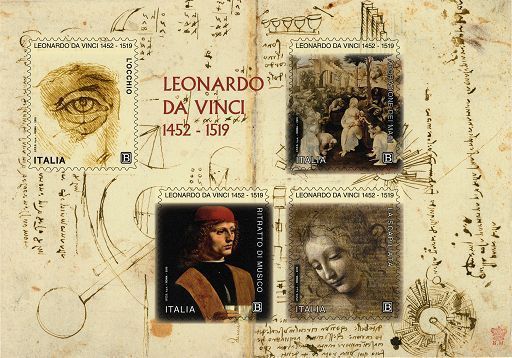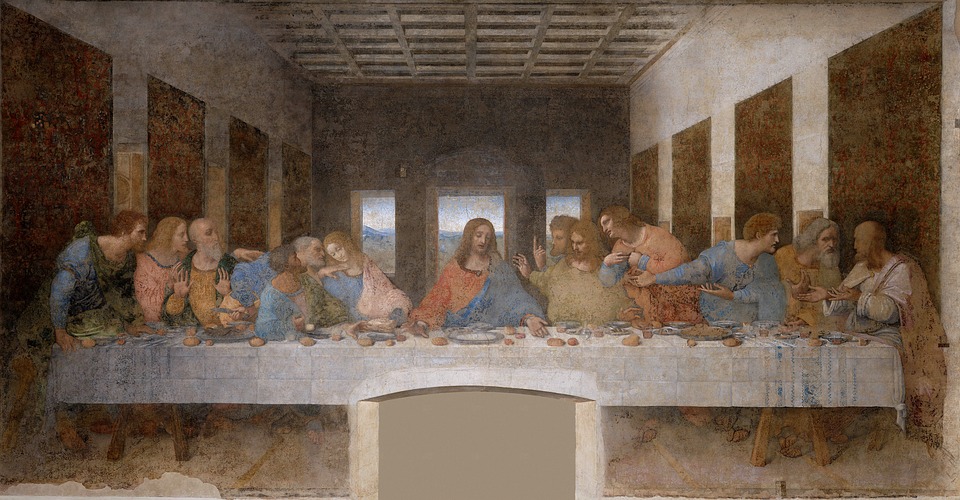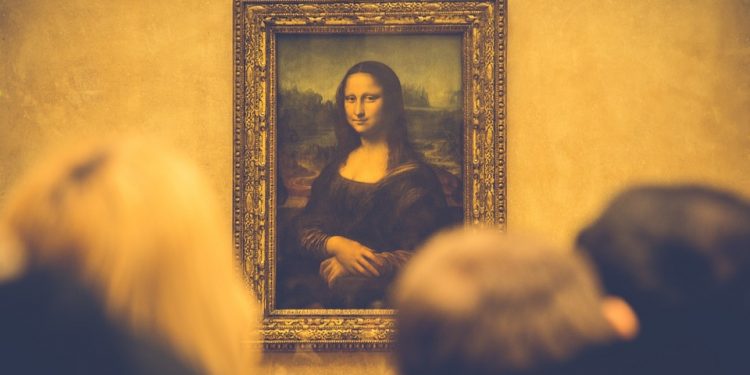Who do you think about when you hear the word “genius”? Einstein? Marconi? Archimede? Maybe But you can’t help but think of Leonardo da Vinci.

And that is why, in theanniversary of the 500th anniversary of his death, which occurred in Amboise, France, on May 2, 1519, will even be the presidents of France and Italy, Emmanuel Macron and Sergio Mattarella, to visit the tomb of the Florentine genius. In his memory today, the Mise, the Ministry of Economic Development, will issue four commemorative stampsIn his memory today, the Mise, the Ministry of Economic Development, will issue four commemorative stamps Each of the four stamps contained in the sheets will represent one of Leonardo’s greatest works: from the “Study of proportions of the face and the eye” to the “Adoration of the Magi“, the “Portrait of a Musician” and ending with the “Head of a Girl“.

Born in 1452 Anchiano, a fraction of the town of Vinci in the metropolitan city of Florence, after the first steps in the workshop of Verrocchio, Leonardo becomes step by step the emblem of the Italian Renaissance. Born in 1452 Anchiano, a fraction of the town of Vinci in the metropolitan city of Florence, after the first steps in the workshop of Verrocchio, Leonardo becomes step by step the emblem of the Italian Renaissance.
But it was with Francis I of France that Leonardo established the most important relations. The French king, a lover of both art and war, for decades struggling with the overwhelming power of the universal empire of Charles V, fell in love with the Florentine artist and engineer. He was 64 years old when Leonardo was invited to the court of Francesco, who was only 23 years old. And he amazed the French monarch with works such as the Monna Lisa, still the jewel in the crown of the Louvre in Paris and an icon of the Italian Renaissance. Leonardo will remain in Amboise for three years until his departure at the age of 67. It is said that, having learned the news, the French sovereign let himself go to a heartfelt cry of discouragement.
From medicine to physics, from mechanics to art, Leonardo perfectly embodies the idea of extraordinary thought, methodology, pure intuition and above all courage in experimentation. A mix that has rightly placed him in the Olympus of the greatest human beings in history.
On that morning of 2 May 1519, Leonardo left the world a treasure trove of incalculable art and knowledge, which is still relevant today. We still study his Vitruvian Man, who analyzed in detail the proportions of the human body, one of the passions of the Florentine genius. Continuiamo a studiare il suo Uomo Vitruviano, che analizzò nel dettaglio le proporzioni del corpo umano, una delle passioni del genio fiorentino. No less so in the military field, where he gave the basic ideas for what in the 19th and 20th centuries would become the airplane, the mortar and the tank.

































